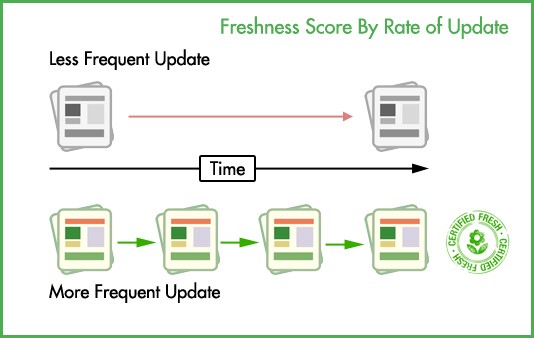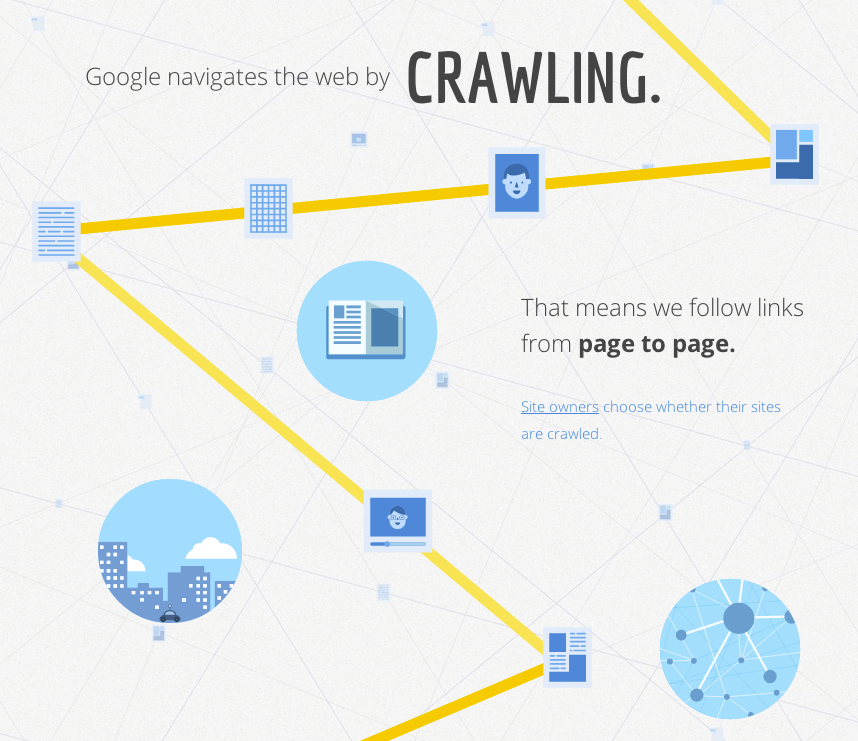There is no way anyone can tell you how long it will take to get your website added to The Google Index.
And no one can guarantee getting added immediately, including Google who certainly makes no promises.
But, there are methods that others before you have used to increase crawl index speed.
You may be asking why you shouldn’t simply “wait it out” until Google finds your website naturally? Well, your site can only be added in search engine results pages if it’s listed in the search engine’s index. Which means no traffic until then.
Now, if you don’t mind the wait, then wait it out. Otherwise, the only way you’ll get traffic is by people actually typing in your website URL. We all know that doesn’t happen often…
This post lists 5 of the simplest and best ways to getting added to Google index chop-chop.
But first…
Search engine science
Google’s philosophy: focus on the user
One of Google’s philosophy, is the belief that we should, “Focus on the user and all else will follow.”
I mention this because if you understand what’s important to Google (and Google reigns online, so you have to understand their ideals), and follow their principles, your website will thrive.
And let me tell you: Google is very focused on their users, and through their principles, have forced websites to focus on theirs too.
In earlier Internet days, website owners could get away with crap content, and all sorts of spammy methods of getting more traffic, but this is no more.
Even online marketing has followed the Google philosophy and is now all about the user experience. So everything you do online as far as your website goes, should incorporate the mantra, “focus on the user and all else will follow”.
And this brings me to my point…understand that if your website contains crap and fluffy content, it’s not going to do very well from a search engine point of view (yes, Google has ways to know stuff…)
How Google indexing works
Google has spiders and bots roaming the Internet, “crawling” page after page, “clicking” through each link to find more content.
It starts from the big gun websites, like Wikipedia, and crawls deep, looking for links to other fresh content.
And then, when the spider finds new stuff, it has to figure out what it’s about. It uses about 200 elements to decipher this.
It figures that if a link to your website is on one of the big websites that Google considers important, it’s going to find your site fast and add you to the Google index.
And so a lot – but not all – of the following methods are based on bringing the spider to your website by making it easy to find you, through links to your site from the top dogs.
#1: Add fresh content to your website often
The freshness of your content influences your website’s search rankings because of how Google scores it.
In general, Google gives websites a “freshness” score based on the date content was first indexed. Over time though, the content score degrades.

Image Credit: SEOPressor
What else influences the freshness score?
- Changes to older content, and how many changes were made.
- New page creation each year.
- Trends in the amount of new links to your site over time.
- Freshness of the websites that link to yours.
- Big changes in anchor text could devalue older links.
- Bounce rate (how long visitors stay on your website).
- Increasing backlinks over time.
Although adding fresh, original content to your website regularly won’t necessarily speed up the Google index process, if you’re optimizing your content for SEO, it will be found sooner. Publishing regular content though, will ensure a constant source of traffic – in time – without having to pay for it by paid advertising like Adwords.
Steps
- Develop a content strategy.
- If you don’t write well, hire someone that does.
- Keep SEO in mind when you create content.
- A general rule of thumb is to add content to your website twice a week. If you add the right content, you should start noticing a difference to incoming traffic within 3 or so months.
#2: Submit guest posts on authority sites
As I explained earlier, the spider begins it’s Google index journey from the biggest websites, and then crawls the links on each page, creating it’s spider web page after billionth page.
How Google’s spider crawls to find fresh content

Image Credit: Techinfographics
Now, if the spider comes across a link to your website on one of those top websites, it discovers your page, and starts indexing your content.
Gotcha spider!
This is why guest posting on authority websites can make Google notice your page faster. When you guest post, you are normally allowed to add a natural un-spammy link to your website, and it’s this little link that makes it all worthwhile.
Steps
If writing’s not your thing, you’re going to find it hard to get an authority website to accept your work, because their standards are usually quite high. That’s what’s made their website an authority, because they provide top quality, value-add content that their target audience desires.
The most important aspect when deciding on who to write for, is that it must be related to your product or service, but not be a direct competitor. In addition, follow these steps to make sure you’re on the right path:
- Understand what your content’s goal is, and fulfill it.
- Do your homework by checking out the other website’s target audience and what type of content attracts them.
- Only write content that adds value for the other website’s readers.
- Be careful not to blatantly promote your own links.
#3: Create an XML sitemap
A sitemap is like a map which shows the Google index spider how to find content on your website. A sitemap speaks the spider’s language, so it understands your site better.
Steps
The simplest way to create and submit an XML sitemap of your website is by:
- Installing an SEO plugin (if you’re on WordPress) that configures the sitemap and submits it. You can try the Yoast plugin.
- Or go to XML-Sitemaps and add your URL to create a sitemap.
#4: Submit to social bookmark sites
I have read of case studies where an URL has been submitted to a social bookmark site like Digg and Delicious, and the page has been added to the Google index within 5 minutes.
Now please don’t expect that kind of result, as it’s definitely not guaranteed, but I’d say it’s worth a shot submitting content to a social bookmark site or two.
How it works is that you save links to web pages you want to “bookmark”, with the purpose of either sharing or keeping the content. Be aware though, that some of these sites are pointless to use if they mark links to other domains as “nofollow”. What this means is that your website won’t benefit at all.
Search Engine Journal lists social bookmark sites that don’t use “nofollow” so that you don’t waste your time setting up accounts for those.
Steps
- Each social bookmark website will have different steps to submitting pages, so follow each of their guidelines.
#5: Directly notify Google of new content
Google provides a method you can use to directly notify them of new content. Of course, no guarantees, but it can’t hurt.
Steps
- Enter your Google Webmaster Tools account. You need a Gmail account to do this. If you have not yet set up a Google Webmaster Tools account, follow this how-to guide by Wordtracker.
- Once the account is set up, and you’re in the account, click “submit URL”.
- Then click “I’m not a robot”.
- Finally click “submit request”.
